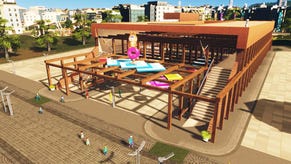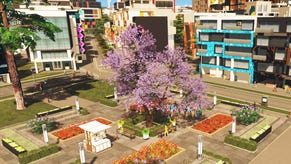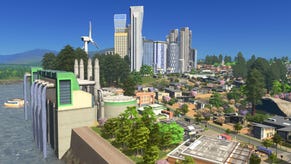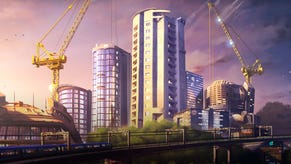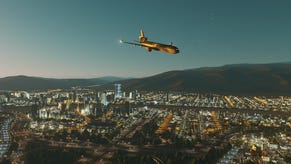Cities Skylines: After Dark review
Phase the sun!
The tourist district of Amity Heights is, in my opinion, the perfect beach resort. The glittering waterfront, once lined by pristine rainforest, is now dominated by high-rise hotel blocks, providing that gnawing sense of claustrophobia so vital to any relaxing getaway. The pristine sands of the beach itself play home to a variety of attractions: fishing tours, waterside restaurants, volleyball courts and merry-go-rounds, all designed to gently fleece busy families and vacationing couples of their holiday funds.
As if that wasn't enough, Amity Heights connects directly to a dedicated leisure district, crammed with bars and nightclubs, for those holidaymakers who want to continue their hedonism after the sun goes down. It's the definitive tourist trap, but there's just one problem with the place - the sea is full of shit. Back when my proud metropolis was but a squalling hamlet, I only had access to a tiny strip of estuary to pump water out of and sewage into. Over the course of several months, hundreds of tons of untreated effluent was carried downstream, turning my previously crystalline blue waters a distinctly nutty brown.
You'd think these waters reeking of human filth would prove a tad off-putting to my city's visitors, and yet nobody utters a peep. Instead, they seem quite happy to cast out their fishing lines into the passing faecal shoals, and here is a hint of the biggest problem with After Dark, the first expansion to Cities: Skylines - while it makes many additions to the base game, they ultimately have little overall effect on how it plays.
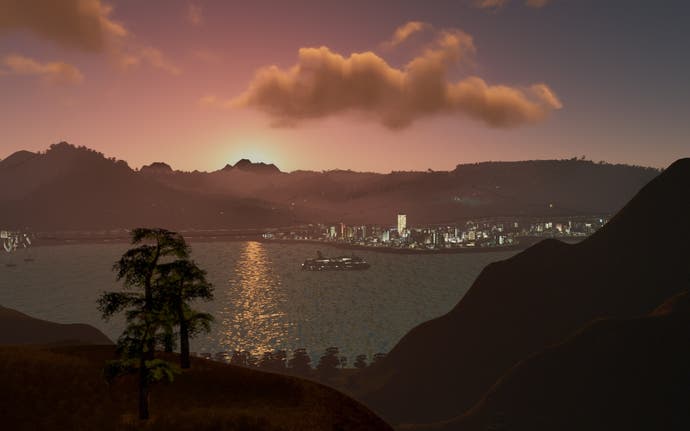
In defence of the developers at Colossal Order, it didn't make the job of expanding Skylines easy for itself. Skylines has enjoyed official modding support since release, and the community has taken to the task like a duck to water, adding everything from first-person cameras to traffic monitoring tools. Hence the developers have been forced to fill in whatever gaps have been left by the community, resulting in an expansion that is intelligent and methodical in some areas, and somewhat throwaway in others.
The most noticeable of these additions is of course the new day/night cycle, although technically it's more of a week/night cycle. The sun moves across the sky at a pace considerably slower than that dictated by the calendar which ticks away in the bottom-left corner of the screen. It makes you wonder how the city functions given the sleep deprivation its citizens must suffer, but I suppose it's better than the city flitting constantly between light and dark as if God was idly toying with the celestial light switch.
A city at night is an entirely different beast to a city in the daytime, and at first glance After Dark appears to represent this well. Hover the camera above your city at twilight, for example, and the details slowly fade away, while the moody glow of street lamps trace an abstract outline of the nearby streets and highways. Up close, your residential district slumbers to the chirping of crickets, while your commercial districts come alive. Sunrises and sunsets act as intervals between your city's two acts, briefly washing its roads and buildings in a glorious reddish glow.
While the change in your city's look is striking enough, the difference in its behaviours aren't nearly as well conveyed. Industrial areas clunk and hiss exactly as they do during the daytime, and the only major systemic difference is that crime increases at night, and the impact of this largely depends on your crime-rate to begin with. It's also important to note that After Dark's day and night cycle is actually freely available to all Skylines players, which raises a question about the expansion's real purpose beyond the cosmetic.

The answer to this is that the darkness isn't actually the expansion's most substantial addition. That would be the new commercial districts, which allow players to specialise their commercial areas towards either leisure or tourism. Dedicating an area to leisure will result in fewer shops and more bars, nightclubs and casinos, whereas the hotels and apartment blocks of the tourism district have a dramatic effect on your skyline - impressive and obnoxious in equal parts.
Unlike the standard commercial zones, which require educated workers in order to thrive, the tourism and leisure districts live or die on the strength or your transportation links. If you're building a holiday seafront, it's a good idea to place a passenger harbour nearby, and threading your leisure districts with bus routes and metro stations will ensure a healthy supply of residents looking to gamble and drink themselves silly.
After Dark smartly broadens your options in this area, such as the taxi service which allows you to place cab stands throughout the city, or the large bus terminal that acts as a central hub for all bus services. The largest cities unlock access to a sprawling international airport as well, and there are new pathway types for pedestrians and cyclists - although I found these rather tricky to fit around existing roads.
Lastly, After Dark introduces a sprinkling of attractions to complement the tourist side of things. Alongside the aforementioned beach-focused buildings, there's a riding stable, and even a zoo. The latter elicited a little squeak of joy from me when I spotted it, because nothing makes me happier than sticking a rare animal in a cage for people to gawk at until it dies. Speaking of cages, After Darks introduces a prison too, allowing you to rehabilitate criminals and release them back into society.
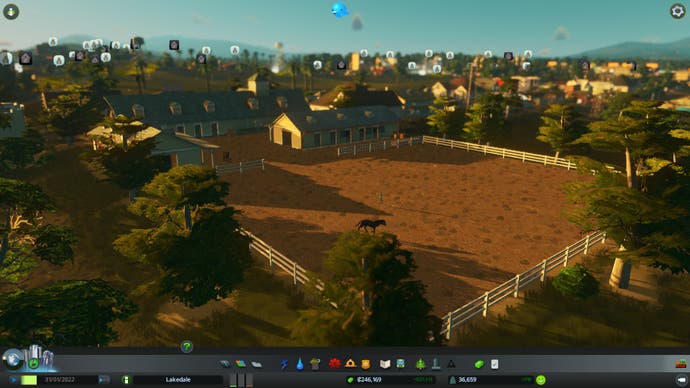
All of these are pleasing extensions, and it's undeniably fun to watch each new piece of your city spin and whirr like dozens of interconnected flea circuses. But again, the effect these changes have on the deeper simulation is less than you might hope for and expect. There are various new sliders to tinker with, such as adjusting your budget between day commerce and night commerce, or instructing services like rubbish disposal to function at certain times of day, but it's all optional rather than fundamental.
Meanwhile, the main challenges and flaws that existed in the vanilla Skylines game remain unchanged here. The most troublesome part of the game remains the challenge of providing generic industry with sufficient workers, and finding solutions to traffic congestion that don't involve a complete restructuring of your city centre. Connecting water pipelines and electricity pylons becomes increasingly tedious as your city grows.
After Dark also fails to address the fact that Skylines lacks a definitive identity of its own, and still plays heavily on the quaint and cheerful aesthetic established by Maxis' troubled SimCity reboot. After Dark offered an opportunity for the designers to move away from that style by embracing both the highs and lows of nights in the city - the vomit-stained sidewalks and drunken street-brawls that go hand in hand with chattering bar-crowds and alluring neon signage. Instead, your city by night remains disappointingly similar to your city by day - just busier in some areas and quieter in others.
This doesn't make it a bad expansion by any means. After Dark effectively doubled my playtime of the game, and I was never bored during that period. But it does prevent it from being an essential addition to what already existed. In the end, After Dark is a night out you'll undoubtedly enjoy, but one you may not remember much of by the time morning comes around.




